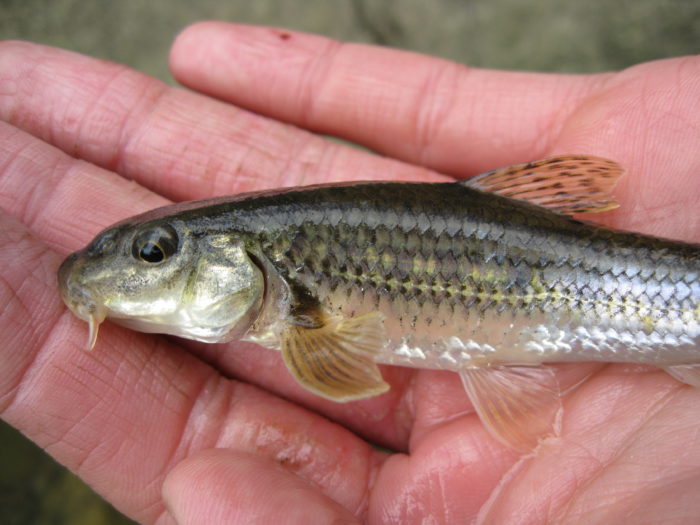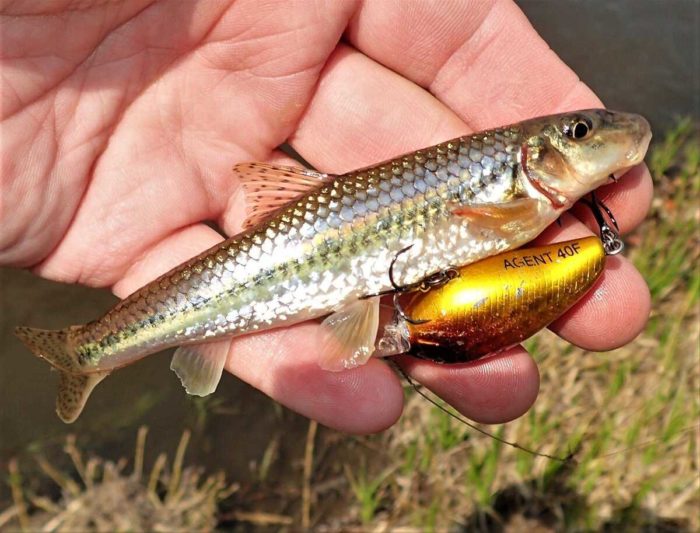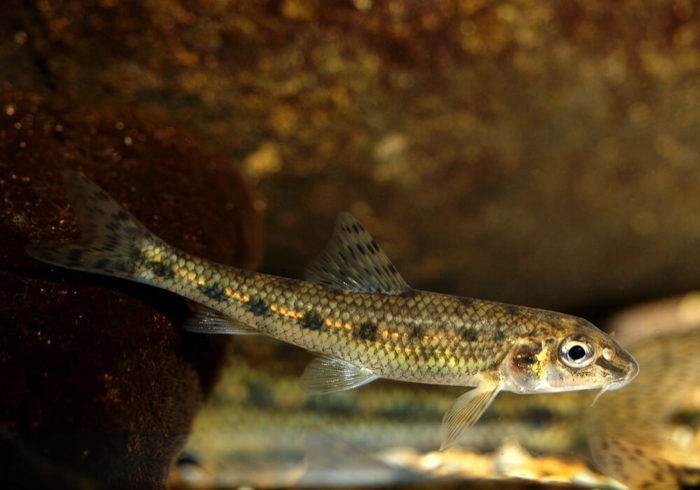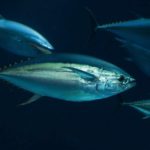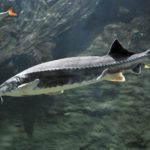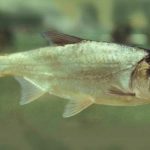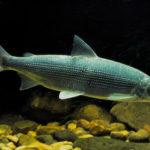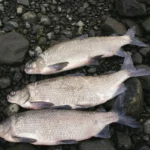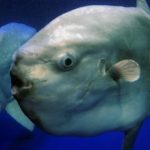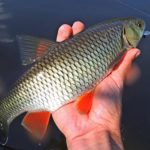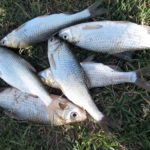The gudgeon fish is a small freshwater inhabitant belonging to the carp family. Despite its small size and lack of commercial value, it attracts the attention of fishing enthusiasts, as it is an excellent live bait for catching large predators. In addition, the gudgeon is popular among aquarists due to its decorative appearance.
What kind of fish is this
Gudgeon is a fish that belongs to the carp family. It is widespread in many regions of Europe, with the exception of the northern and southern parts.This type of fish has a common diet that includes tendipedid larvae, mayflies, small shells and sometimes even the eggs of other fish.
The fish reaches sexual maturity in the third or fourth year of life, when its length is more than 8 cm. This fish can be kept in cold-water aquariums, which makes it a popular subject for research and study in scientific and aquarium settings. Research on this aquatic inhabitant began in the 18th century, and since then its species have been widely studied.
The first data about it became known in the 18th century, and since then its research has continued and been replenished with new scientific discoveries. An important contribution was the work “Fauna of the Russian Empire. Fish”, published in 1912, which presents data on minnows in Russia.
The fish has a peculiar behavior, forming large schools. This makes it a food source for many predatory fish that hunt it for food. In turn, the gudgeon is an important component of the ecosystem of the reservoirs where it lives.
Studying this fish and its role in natural communities helps to better understand and preserve the biodiversity of aquatic ecosystems. In addition, the gudgeon is of interest to aquarium enthusiasts, who can keep it in their aquariums and enjoy observing its behavior and unique adaptations to life in the aquatic environment.
About her appearance
This is a small fish belonging to the carp family. Externally, its varieties are practically no different from each other. Usually they are no more than 15 cm in size. The fish has a greenish-brown back, light sides and belly. Her body is covered with a pattern of dark spots, creating a camouflage effect against the background of the ground.This coloring helps them hide and move unnoticed in their habitat.
In addition to coloring, the gudgeon is distinguished by special features of its anatomy. It has a slab-like body and short antennae that are located at the corners of its mouth. These antennae help the fish navigate and find food in the water.
An adult has an average weight of about 100 grams, but individuals weighing between 50 and 60 grams are more common. Minnows are long-lived and can reach an age of up to eight years, but in most cases, fish older than three years are rare.
Despite its small size, the gudgeon is an interesting object of study for researchers and fish farming enthusiasts. Its unique appearance, adaptations to its habitat and behavior in water are of scientific and aesthetic interest, making the gudgeon one of the important components of aquatic ecosystems.
Habitat
The gudgeon is a fish that lives in Europe, Asia and the Baltic Sea. Distributed throughout Russia, except for the northern regions. Adapted to different habitat conditions, found in rivers, lakes and flowing reservoirs. It feeds on tendipedid larvae, small shells, and eggs of other fish. Resistant to salinity water. An important component of the fish fauna, it plays the role of a food source and maintains the ecological balance of aquatic systems.
Diet
The gudgeon is an omnivorous fish that feeds on a variety of animal foods: fry, insect larvae, crustaceans, worms and others.It can also eat other fish eggs and plant matter, including algae. The gudgeon is active in the evening and uses a “lazy hunting” strategy, waiting for food at the bottom of the reservoir and instantly attacking it. This allows it to use energy and resources efficiently, and its flexibility in food choice makes it an important link in the food chain of the aquatic ecosystems where it lives.
Lifestyle
Minnows are social fish that form schools in rivers and flowing lakes with a sandy bottom. How many individuals are in one flock does not affect their lifestyle. During the day they actively feed at medium depths, at night they rest on the ground and hide in bottom thickets. Their lifestyle is associated with adaptation to the environment; the formation of flocks and the use of “camouflage” help them survive and hunt. Minnows play an important role in freshwater ecosystems as active predators and food sources for other fish.
Species of minnow
This fish is represented by various subspecies, the total number of which exceeds 15. Among these subspecies, the following species are the most common and known:
- Common (Rutilus rutilus) is the most common species that is found in most water bodies in Russia. It has a distinctive appearance with pale coloration and is found in several freshwater ecosystems.
- Blackling (Rutilus frisii) is a subspecies distinguished by its dark color and large size. It often lives in deep lakes and flowing rivers.
- The narrow lead (Rutilus leuciscus) or sandstone is a species of gudgeon that prefers river bodies of water with a sandy bottom. It has a narrow body, which helps it move in fast currents.
- The Siberian gudgeon (Rutilus rutilus lacustris) is a subspecies that lives in the central part of Siberia, the Middle Volga region and the Urals.It is adapted to the harsh conditions of this region and lives in freshwater bodies.
- Whitefin (Rutilus rutilus caspicus) is a common species found in rivers flowing into the Baltic, Black, Caspian and Azov seas. There are characteristic dark spots that run from the head to the tip of the tail.
Stabilizing the population of the white-finned gudgeon is considered an urgent task, since this species is included in the Red Book and is recognized as rare and endangered. This is due to the influence of many factors, including changing water conditions, water pollution, overloading of water bodies, as well as illegal fishing and habitat loss. The implementation of measures to protect and preserve this species-forming element of freshwater ecosystems remains an important area of work for specialists and organizations involved in nature conservation.
Features of reproduction
The gudgeon begins to reproduce at 3 years of age upon reaching sexual maturity. Spawning occurs at the end of May, beginning of June at a water temperature of about 13 °C. Males and females form small groups for spawning. The female lays eggs in portions, on suitable substrates of stone and sand, and the process of egg development lasts about a week. The hatched fry feed on plankton and gradually expand their diet. Reproduction and survival of young individuals are important for the minnow population and the ecosystem of water bodies.
Fishing Features
Minnow is a rare target for anglers and often ends up in their hands by accident. This fish is usually used as bait, but it can also be of interest to anglers in the warmer months. Minnows are active during the warm months and live near shallow river beds, reservoirs and streams.When catching them, you need to use light tackle with a thin line, a float and a small hook, as they move quickly. Worms and larvae attract individuals with their movement and are considered good baits. It is best to focus on sandy areas with fast flowing water.
Fishing for these aquatic creatures is a great way to enjoy nature and the surrounding atmosphere. This requires light tackle, precise selection of bait and the right place in the sandy shallows of rivers, reservoirs or streams. This will allow you not only to catch interesting fish, but also to enjoy beautiful scenery while fishing.
Gudgeon in cooking
This fish is rarely used in cooking; it is mainly used as bait for catching large fish. However, experts rate it very highly when fried or as a component of fish soup.

